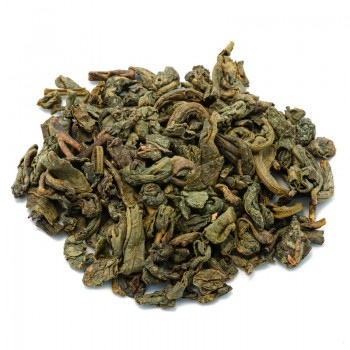Licorice Mint Green Tea combines different taste and beneficial qualities, available from each natural ingredient. A drink to be enjoyed at any time of the day, even as a thirst-quencher in the summer, if served cold.
The pleasant flavour, in which the aroma of licorice emerges, makes this green tea a fragrant alternative to the classic infusion.
Properties and benefits:
Licorice brings its soothing properties against irritations to the infusion, useful in case of sore throat or in the treatment of headaches.< /p>
At the gastrointestinal level, this tea provides a contrast action to the occurrence of gastroesophageal reflux, thanks to the beneficial qualities of licorice and mint.
Even the properties of mint, in fact, are mainly linked to the digestive system and to support the digestion of food (slow digestion, heaviness, swelling). For this reason, the blend of green tea, mint and licorice is very effective in counteracting the feeling of nausea associated with indigestion or travel sickness.
Mint and licorice tea can relieve stomach pains and gastrointestinal irritations, digestive difficulties, intestinal gas, bloating. Contrasts gastroesophageal reflux.
Other properties donated to this tea by licorice are the laxative ones, and by balancing the astringency of green tea they create a tea suitable for gently stimulating, in case of constipation, thanks to glycyrrhizic acid.
Licorice is hypertensive, so this green tea can be tonic as well as refreshing in the summer, if low blood pressure occurs in the heat.
In winter, however, licorice roots contain soothing properties for the throat and expectorant of the mucus inside the blocked nasal passages. It is therefore a valid natural remedy to treat cough, cold or rhinitis. Mint also carries out a decongestant and balsamic action for the respiratory tract, enhancing the qualities of licorice. Facilitates the fluidification of secretions such as mucus and phlegm, favoring the unblocking of clogged bronchi.
The active ingredient that soothes irritations in licorice is glycyrrhizin, an acid with emollient, decongestant and expectorant qualities. Furthermore, glycyrrhizin or glycyrizzina has diuretic properties, which are combined with those of green tea for a detox effect on the body.
The purifying qualities of mint and licorice green tea can play a role in well-being
Origin and history of cultivation:
The tea plant is native to areas of East Asia, India and Southeast Asia. Today it is cultivated all over the world in tropical and subtropical regions, due to the success of the infusion made from its leaves.
The name of the plant, Camellia comes from the surname of the Reverend Georg Kamel (1661-1706), a pharmacist and missionary in the Philippines, who studied oriental plants for a long time. Sinensis means Chinese, given the enormous diffusion of this plant in China.
According to legend, it was used in China as early as 2700 BC. by Emperor Shennong and the elites of Chinese society, being very expensive to buy. Only in the fourteenth century did it become accessible to all, also useful for its medicinal qualities.
Its virtues were described around 800 AD. by Lu Yu, author of the book "Cha Jing" or The Classic of Tea (the first work that explained the culture and art of tea).
Tea arrived in the West in the 19th century via European explorers, particularly the British, and became the national drink of Great Britain.
Mint is another ingredient used since ancient times in cooking and herbal medicine. Known for its scent, it is a plant native to Europe and Asia. Over time it has spread to northern and western Africa, North America and some oceanic islands.
It has been one of the most used aromatic herbs in the world to purify the air, in temples and homes. It was also used as a medicine for digestion, the well-being of the oral cavity and as a hot infusion for colds. It also represented hospitality, in classical Greece and the Middle East. In North Africa, tradition has it that the landlord welcomes guests con mint tea.
Licorice is a plant native to western Asia and southern Europe, which today grows in many countries – it is one of the most cultivated plants in the world. Its root has been appreciated since ancient times in food, as well as for its medicinal benefits - especially in oriental medicine as a source of strength, longevity and vitality.
The black licorice we know today comes from the root of the plant, which the Greeks called glykys (sweet) rhiza (root). Thousands of years ago in China, it was mentioned in the oldest Chinese herbarium as a root for treating coughs, food poisoning and the liver. The ancient Egyptians believed that it gave the deceased the ability to drive away evil spirits that approached the soul.
Greek and Roman legionaries chewed the root to quench their thirst during the marches, and to calm stomachaches. In the Middle Ages the monks who used it for bronchial infections, coughs and stomach ailments. The modern sweet licorice dates back to 1760, the candy licorice created by the English apothecary George Dunhill. He used sugar and flour to dilute the medicinal licorice essence, still used today as a flavoring for smoking products, beverages and sweets.
Plant and flowers:
Camellia sinensis, the tea plant, is a species of evergreen shrub in the Theaceae family. From its leaves the different varieties of the infusion are obtained, including green tea. The difference is given only by the processing, to reach various levels of oxidation.
The plant grows very tall but is usually cut to less than 2 meters, to facilitate the hand-picking of the leaves, which is repeated several times a year.
Camellia sinensis develops best in cool and humid tropical plateaus, and in evergreen deciduous forests, on sandy and clayey and well-drained soils. The leaves can stretch up to 15 cm, with different shapes according to the variety. The flowers are white, fragrant, and are hermaphroditic (they have male and female organs).
Mint or Mentha is a plant of the Lamiaceae family. It is a very widespread perennial herbaceous plant, also thanks to the many varieties that include about 24 species, with similar herbal properties. There are many hybrids of mint, mainly used for food. The plant grows up to 1-2 meters in height, with stems and foliage sometimes with down - leaves with a serrated edge. It has a fleshy underground root (rhizome), and flowers that are born in thin spikes.
The licorice plant is Glycyrrhiza glabra, a herbaceous plant of the Leguminosae family. It is a herbaceous plant known for its roots, which grow extensively. For this, it needs deep, fertile and moist soil.
The growth of the plants is initially slow, but once started, the licorice can even reach about 2 meters and can become a weed. The roots are harvested in autumn.
Nutritional values of mint and licorice green tea
The components of this green tea are antioxidants and substances such as the amino acids theanine and arginine. Sencha tea makes ascorbic acid (vitamin C), vitamin B, caffeic and chlorogenic acid available. Contains catechin polyphenols (epigallocatechin-3-gallate EGCG, epigallocatechin EGC, epicatechin EC), and mineral salts (calcium, copper, iron, magnesium, phosphorus, potassium). It also contains methylxanthines such as caffeine, theobromine, theophylline.
Mint adds menthol (mint oil), vitamins E, A and beta-carotene to the infusion.
Licorice provides the infusion with antioxidants and phytochemicals such as glycyrrhizin, anethole, quercetin, acids and antioxidants.
How to prepare green tea with mint and licorice
The infusion is obtained by placing in a cup (250 ml), about 3-5 grams of the mixture of green tea with mint and licorice. Water at a temperature of 80 °C.
Leave it to infuse for 2 to 3 minutes, before drinking the Sencha tea infusion.
Green tea mint and licorice: side effects and contraindications
Excessive tea intake can cause some adverse effects, such as gastrointestinal discomfort, stomach pain, nausea, diarrhea, excessive diuresis, stomach ulcers.
Excessive consumption can also have consequences related to theine (caffeine) in sensitive individuals, acting on the nervous system. It can cause insomnia, anxiety, agitation, palpitations, headaches. Moderation in tea intake is recommended green for those suffering from heart problems, due to theine, and are being treated with drugs that act on the nervous system.
Licorice is not suitable for those with high blood pressure. It is recommended to maintain the correct doses of this infusion for those who want to avoid an excessive increase in blood pressure.
Caution is advised when taking to pregnant and lactating women.

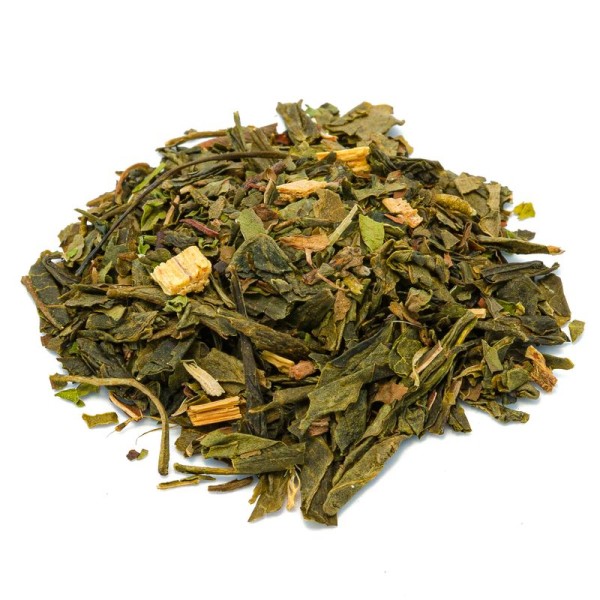







 No reward points for this product.
No reward points for this product.
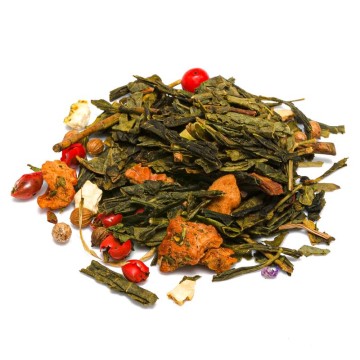
![Green Tea Choui Fong Tea [Natura d'Oriente]](https://www.naturadoriente.com/3379-home_default/green-tea-choui-fong-tea.jpg)
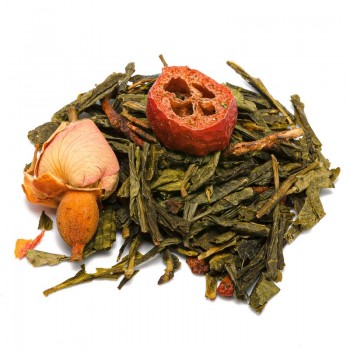

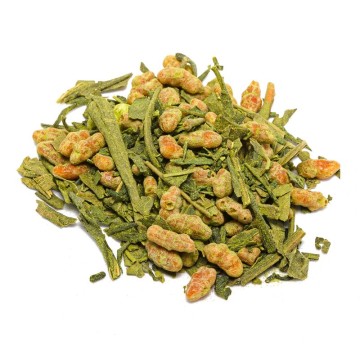
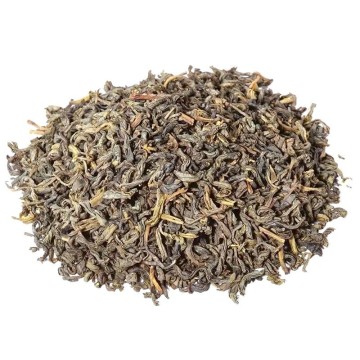
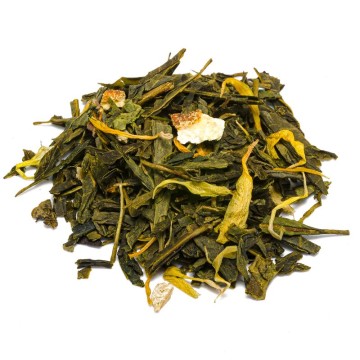

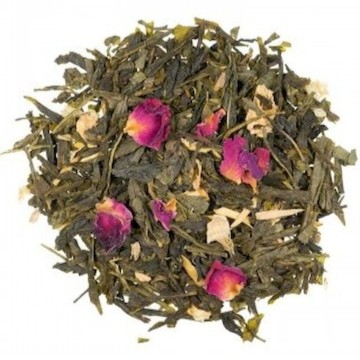
![Green Tea Ceylon Melfort Special [Natura d'Oriente]](https://www.naturadoriente.com/3378-home_default/-green-tea-ceylon-melfort-special-.jpg)
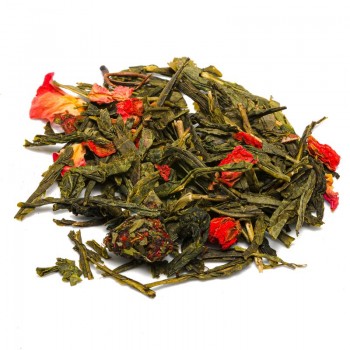
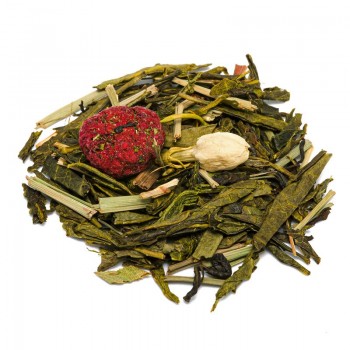

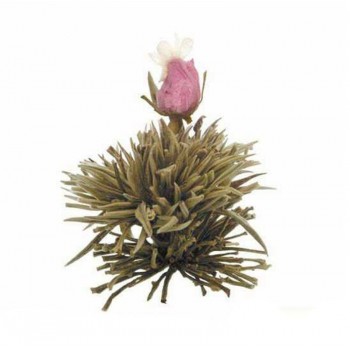
![green tea roasted almond [Natura d'Oriente]](https://www.naturadoriente.com/3366-home_default/green-tea-with-roasted-almonds.jpg)
